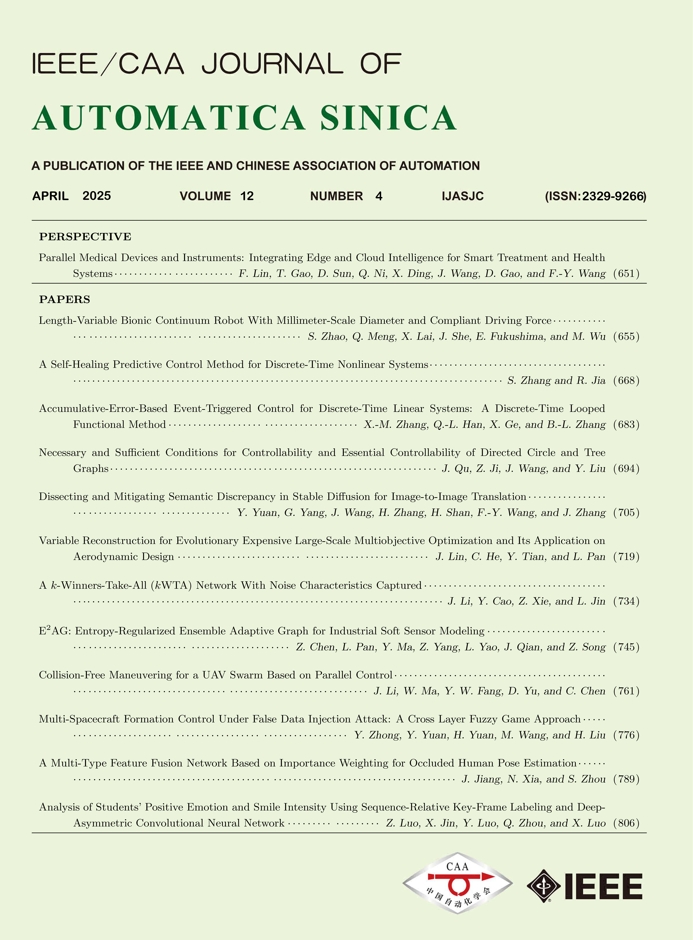2024, 11(7): 1579-1590.
doi: 10.1109/JAS.2023.124155
Abstract:
This paper revisits the problem of bumpless transfer control (BTC) for discrete-time nondeterministic switched linear systems. The general case of asynchronous switching is considered for the first time in the field of BTC for switched systems. A new approach called interpolated bumpless transfer control (IBTC) is proposed, where the bumpless transfer controllers are formulated with the combination of the two adjacent mode-dependent controller gains, and are interpolated for finite steps once the switching is detected. In contrast with the existing approaches, IBTC does not necessarily run through the full interval of subsystems, as well as possesses the time-varying controller gains (with more flexibility and less conservatism) achieved from a control synthesis allowing for the stability and other performance of the whole switched system. Sufficient conditions ensuring stability and $ H_{\infty} $ performance of the underlying system by IBTC are developed, and numerical examples verify the theoretical findings.
S. Lu, T. Wu, L. Zhang, J. Yang, and Y. Liang, “Interpolated bumpless transfer control for asynchronously switched linear systems,” IEEE/CAA J. Autom. Sinica, vol. 11, no. 7, pp. 1579–1590, Jul. 2024. doi: 10.1109/JAS.2023.124155.


 E-mail Alert
E-mail Alert


